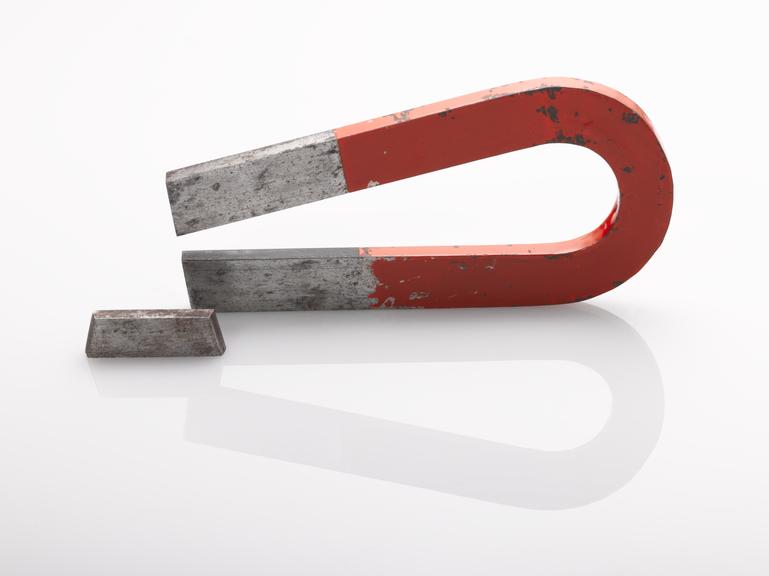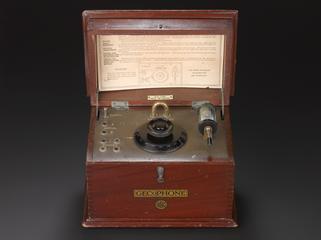
Horseshoe magnet and keep used with experimental form of magnetic detector, 1900-1910
- Made:
- 1900-1910 in Chelmsford
- maker:
- Marconi Company Limited

Horseshoe magnet and keep used with the earliest experimental form of magnetic detector developed by the Marconi Company, probably made by Marconi's Wireless Telegraphy Company, Chelmsford, Essex, England, around 1902.
In the developed form of Marconi’s magnetic detector, an endless band of iron wires is moved by clockwork past permanent magnets at about eight centimetres a second. At the point where the moving band experiences a strong field from the magnets it is surrounded by two coils of wire; one coil carries the radio-frequency signal from the aerial, the other is connected to headphones. The signal received from a spark transmitter consists of separate bursts of radio frequency current, recurring at audio frequency. As each burst occurs, wire that has entered the coils since the previous burst responds to the magnets, inducing an impulse of current through the headphones, and the rapid succession of such impulses gives an audible note. This is the earliest surviving experimental example where a horseshoe magnet is held near the coils to provide the changing magnetic field.
Details
- Category:
- Radio Communication
- Object Number:
- 1923-434/12
- Materials:
- paint and metal (unknown)
- Measurements:
-
overall: 6 mm x 142 mm x 63 mm, .231 kg
- type:
- magnet
- credit:
- Donated by the Institution of Electrical Engineers




